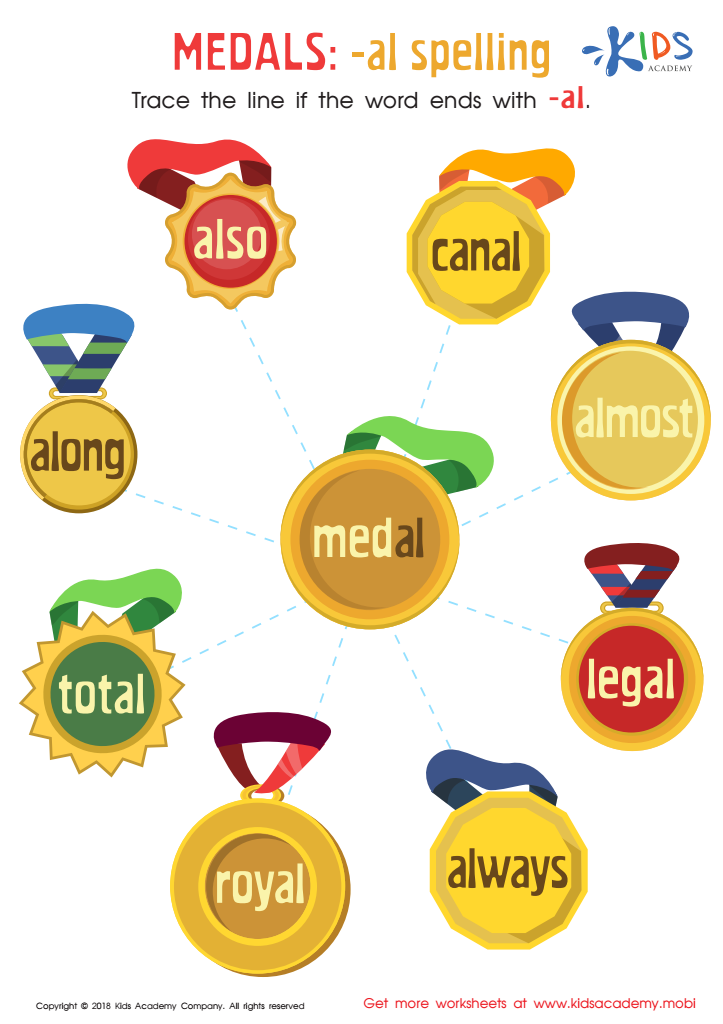Word Recognition Normal Two Letter Phonics Worksheets for Ages 7-8
6 filtered results
-
From - To
Unlock the power of reading for your child with our Word Recognition Normal Two Letter Phonics Worksheets, specially designed for ages 7-8. These engaging worksheets help children recognize and master two-letter phonics combinations, providing a strong foundation for early reading skills. Each activity focuses on identifying, sounding out, and forming basic words, ensuring kids develop essential literacy skills while having fun. Perfect for both classroom settings and at-home learning, our worksheets offer a structured approach to phonics that supports your child's educational journey. Visit Kids Academy to explore and download these invaluable learning resources!


AW Words Team Coloring Fun Worksheet


Words with ea Worksheet


L Blends: "Pl", "Cl" and "Sl" Printable


Medals: Al Spelling Worksheet


Missing Digraph: Part 2 Worksheet


Consonant Blends: "Dr" and "Tr" Printable
Parents and teachers should prioritize word recognition and phonics development, especially normal two-letter phonics, for children aged 7-8 because these foundational skills are crucial for literacy and overall academic success. At this age, children are transitioning from learning to read to reading to learn. They encounter more complex texts, and strong word recognition abilities enable smoother and more fluent reading. Phonics teaches children the systematic relationship between letters and sounds, empowering them to decode new words independently.
Two-letter phonics, such as digraphs (e.g., "ch," "sh," "th") and blends (e.g., "bl," "st"), are prevalent in English and frequently appear in early readers' texts. Mastering these combinations enhances children’s ability to read common words accurately and effortlessly, contributing to better comprehension. This fluency fosters a love for reading and boosts confidence, critical for engaging with various subjects as they progress through their education.
Neglecting these skills could hinder children's reading proficiency, potentially leading to struggles in other academic areas since reading is integral across the curriculum. Therefore, investing time and resources in teaching word recognition and phonics can lay a robust literacy foundation, setting children up for long-term success in their educational journey.
 Assign to My Students
Assign to My Students








